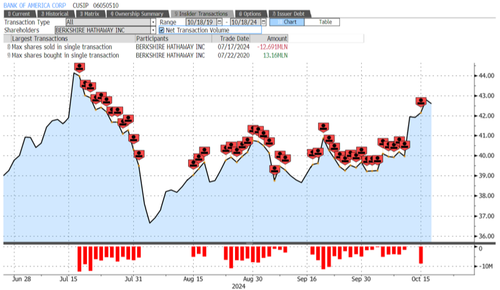
Reliance Industries remains one of the largest and most influential companies in India’s corporate landscape. It holds a strong position in multiple sectors, including energy, telecom, and retail. The company has always attracted investors due to its massive market capitalization, diversified business model, and continuous expansion.
Let’s explore the current Reliance share price, technical analysis, recent trends, and predictions for the near future. As of today, Reliance Industries shares are trading at ₹2708.95, down by -0.
17% from the previous close. This marginal decline follows a broader market downturn, with the Sensex also down by -0.18%, currently trading at ₹80858.
96. The stock has experienced fluctuations during the day, reaching a high of ₹2722 and a low of ₹2683.2, reported by Mint .
This downward trend is consistent with the stock's recent performance, as it trades below its short-term and long-term moving averages. The stock remains under pressure as it struggles to regain momentum in a challenging market environment. The technical indicators for Reliance Industries show that the stock is in a weak phase.
The stock is currently trading below several critical moving averages, both short-term and long-term. These include: 5-day moving average: ₹2725.07 10-day moving average: ₹2750.
15 20-day moving average: ₹2861.60 50-day moving average: ₹2924.58 100-day moving average: ₹2966.
37 300-day moving average: ₹2908.38 Short-term simple moving averages suggest a downtrend. The 5-day and 10-day averages are far, far below the current price of the stock .
Also, the 20-day moving average, which is one of the most important indicators about the medium-term trend of the stock, indicates that it has long distances still before it somehow manages to recover. The medium and long-term averages also suggest significant resistance in the near term. A downtrend for an extended period could be considered since trading is happening below the 50, 100, and 300-day moving averages.
These levels would act as resistance for a pretty long period until the share price moves upwards. Pivot point analysis reveals that Reliance stocks have encountered crucial resistance levels at: ₹2732.93 ₹2751.
32 ₹2765.73 Hence, breaking these levels will imply that a bull run has begun. However, the stock needs to break these levels to recover its northward trajectory.
These are highly important psychological and technical resistance levels. ₹2700.13 ₹2685.
72 ₹2667.33 These support levels provide some cushion to the stock. Any fall below ₹2700 might intensify selling pressure further to drag the stock down.
Market sentiment would be the key determinant of whether the stock manages to stay above these support levels in the coming days. Taking the shareholding pattern of Reliance Industries, the dynamics are very interesting. According to the June quarter filing, the holding by promoters is at 0.
00%. The holding by mutual funds (MFs) is reported at 8.37%, whereas foreign institutional investors (FIIs) hold an important 21.
59% of equity shares in the company. Holding of both MF and FIIs slightly declined in June quarter. The share holding of MF declined from 8.
47% in March to 8.37% in June. Once again, the share holding of FIIs declined during this period from 21.
90% to 21.59%. A decline in such a position indicates institutional investors' concern regarding the prospect of Reliance in the near term, probably due to broader market trends or because of company-specific reasons.
Although these declines are significant, substantial FII ownership still signifies strength in long-term growth prospects for Reliance. However, the decline in institutional holding might bring some short-term pressure on the stock if these trends continue in the following quarters. Reliance operates in energy, telecom, and retail among other business sectors and its stock price often shows a response to prevailing market conditions.
Some of the energy sector players are having an indifferent trend with decliners like Oil & Natural Gas Corporation, Hindustan Petroleum Corporation, and Petronet LNG. Oil India however shot up by 1.7%.
The general slump in the industry may also be contributing to what is going on with Reliance's stock price currently. The company's significant presence in the energy space may, therefore, exacerbate the pressures. That said, Reliance's diversified business model could be a boon to cushion such sector-specific issues in the long run.
Overall market sentiments remain weak with both the indices, Sensex and Nifty, trading in the negative territory. Sensex has fallen to the tune of -0.18%, while Nifty is down to the tune of -0.
07%. This general market fall could keep pace with the fall of Reliance also today. Global factors include inflation worries, interest rates rising, and geopolitical tensions.
Such factors have already had some influence on market sentiment. Reliance is one of the heavyweights of the Indian stock market. Any significant changes in global market conditions could hit its share price more.
The future trajectory of shares of Reliance will depend on many factors. Energy Sector and its dynamics will be on the top: Reliance has a significant presence in the energy business. Its prospects will depend upon changes in oil prices, supply-demand scenario , and government policies.
If oil prices continue to increase, it might help Reliance build volumes for its refining and petrochemicals business. The promise in the telecom and retail space of Reliance still stays there. Telecom arm of the company, Jio, remains at the top, and any further expansions will yield healthy increment in earnings.
That said, retail business is also growing with significant increases witnessed over the digital platforms. This company is aggressively investing in green energy projects. This long-term shift towards renewables might place the company on an upward growth trajectory in the next few years.
However, all these initiatives will take time to deliver returns. One may have to wait for the realization of the projects. Large macroeconomic in the market will determine the stock price for Reliance.
Turnarounds in the global and domestic markets can help the bounce back the bounce back in the stock. More news on inflation control, changes in interest rates, or geopolitical news seems to bode well with the stock. Reliance Industries, in the institutional investor, is a huge stock holding.
Any further decline in MF and FII holding would again increase pressure on the stock. However, renewed interest from these investors could once again catapult the stock. Institutional investors are significant holders of the Reliance stock .
Further decline in MF and FII holding would again increase pressure on the stock. However, renewed interest from these investors could once again catapult the stock. The present scenario is a tough phase for Reliance Industries.
The stock is trading below all key moving averages and hence reflects short and long-term weakness in this stock. Most crucially, though, its near-term direction will be determined by levels of support and resistance. Beyond those lines, the fall from there will be deeper, while above ₹2732.
93 a reversal is expected. Institutional ownership cuts have been trending downward lately. However, Reliance's diversified business and growth potential in telecom, retail, and especially in green energy bode very well for a long-term case.
The investor should, therefore, keenly observe the state of affairs in global markets and sectoral tendencies for signs of how the stock will perform into the future..













